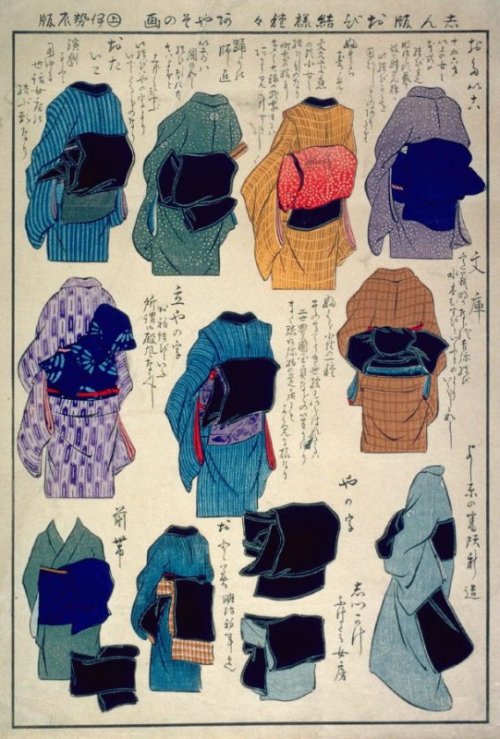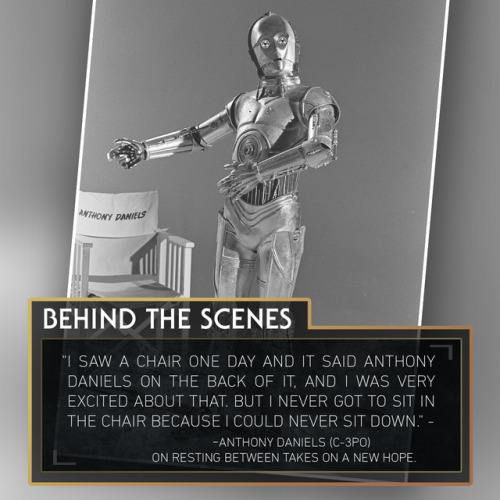Back When I Was A Studying Biology, I Noticed That A Lot Of Anatomical Terms Sound Like They Come Straight

Back when I was a studying biology, I noticed that a lot of anatomical terms sound like they come straight from Middle Earth. So, to celebrate the release of the last Hobbit film, I’ve created this INCREDIBLY nerdy quiz.
Do these words and phrases refer to parts of the human body, or reference people and places from J. R. R. Tolkien’s work?
Antrum of Highmore
Crypt of Morgagni
Caves of Androth
Lobelia
Loop of Henle
Scapha
Great Vein of Galen
Halls of Mandos
Groin
Gap of Calenardhon
Macewen’s Triangle
Canal of Schlemm
Gerontius
Islets of Langerhans
Meckel’s Cave
Chamber of Mazarbul
You shall not pass.
More Posts from Philosophical-amoeba and Others
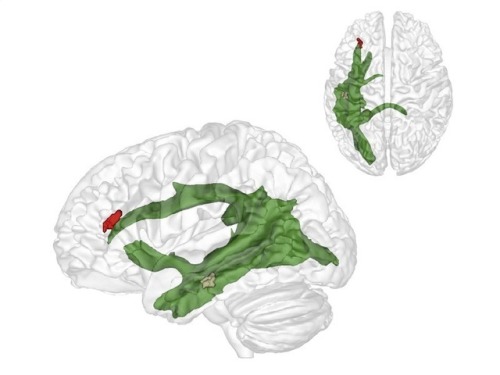
(Image caption: The maturation of fibres of a brain structure called the arcuate fascicle (green) between the ages of three and four years establishes a connection between two critical brain regions: a region (brown) at the back of the temporal lobe that supports adults thinking about others and their thoughts, and a region (red) in the frontal lobe that is involved in keeping things at different levels of abstraction and, therefore, helps us to understand what the real world is and what the thoughts of others are. Credit: © MPI CBS)
The importance of relating to others: why we only learn to understand other people after the age of four
When we are around four years old we suddenly start to understand that other people think and that their view of the world is often different from our own. Researchers in Leiden and Leipzig have explored how that works. Publication in Nature Communications on 21 March.
At around the age of four we suddenly do what three-year-olds are unable to do: put ourselves in someone else’s shoes. Researchers at the Max Planck Institute for Human Cognitive and Brain Sciences (MPI CBS) in Leipzig and at Leiden University have shown how this enormous developmental step occurs: a critical fibre connection in the brain matures. Senior researcher and Leiden developmental psychologist Nikolaus Steinbeis, co-author of the article, took part in the research. Lead author, PhD candidate Charlotte Grosse-Wiesmann, worked under his supervision.
Little Maxi
If you tell a 3-year-old child the following story of little Maxi, they will most probably not understand: Maxi puts his chocolate on the kitchen table, then goes to play outside. While he is gone, his mother puts the chocolate in the cupboard. Where will Maxi look for his chocolate when he comes back? A 3-year-old child will not understand why Maxi would be surprised not to find the chocolate on the table where he left it. It is only by the age of 4 years that a child will correctly predict that Maxi will look for his chocolate where he left it and not in the cupboard where it is now.
Theory of Mind
The researchers observed something similar when they showed a 3-year-old child a chocolate box that contained pencils instead of chocolates. When the child was asked what another child would expect to be in the box, they answered “pencils”, although the other child would not know this. Only a year later, around the age of four years, however, will they understand that the other child had hoped for chocolates. Thus, there is a crucial developmental breakthrough between three and four years: this is when we start to attribute thoughts and beliefs to others and to understand that their beliefs can be different from ours. Before that age, thoughts don’t seem to exist independently of what we see and know about the world. That is, this is when we develop a Theory of Mind.
Independent development
The researchers have now discovered what is behind this breakthrough. The maturation of fibres of a brain structure called the arcuate fascicle between the ages of three and four years establishes a connection between two critical brain regions: a region at the back of the temporal lobe that supports adult thinking about others and their thoughts, and a region in the frontal lobe that is involved in keeping things at different levels of abstraction and, therefore, helps us to understand what the real world is and what the thoughts of others are. Only when these two brain regions are connected through the arcuate fascicle can children start to understand what other people think. This is what allows us to predict where Maxi will look for his chocolate. Interestingly, this new connection in the brain supports this ability independently of other cognitive abilities, such as intelligence, language ability or impulse control.







Fuji-Ya Restaurant, Second to None
In 1968, Reiko Weston opened her new Fuji-Ya restaurant built atop the limestone foundation of a 19th-century flour mill overlooking the Mississippi River and the Stone Arch Bridge. The original Fuji-Ya restaurant operated near 8th St. and LaSalle beginning almost a decade earlier, in 1959, and served fine Japanese food including Charcoal-Broiled Teri-Yaki dinners, seafood dishes, soups, rice plates, and more. Fuji-Ya translates to “second to none” and the new restaurant offered a dining experience like no other in the Twin Cities.
Weston’s restaurant business expanded over the years with Taiga, a Chinese Szechwan restaurant in St. Anthony Main, and The Fuji International in Cedar-Riverside neighborhood, which featured Korean, Chinese, and East Indian food in addition to Japanese food. Her restaurants received numerous awards and Weston herself was named Minnesota Small Business Person of the Year in 1979.
After Reiko Weston passed away in 1988, her daughter Carol stepped in to manage. But in 1990, the City of Minneapolis bought out the historic restaurant in order to make way for the newly designed parkway. About a decade later, Fuji Ya was brought to life again in Uptown in the trendy Lyn-Lake area, where it remains today.
Recently, Fuji-Ya has gained renewed attention as the Park Board makes plans for a $12 million riverfront refresh. Plans include the teardown of the old Fuji-Ya building, expansion of green space, improved pedestrian crossings, and the addition of a new riverfront restaurant. It was announced last week that Sioux Chef owners Sean Sherman and Dana Thompson will open Owamni: An Indigenous Kitchen on the site.
Menu from the original Fuji-Ya restaurant at 814 LaSalle Ave. from the Minneapolis History Collection Menu Collection. Photos from the Star Tribune Photograph Collection at the James K. Hosmer Special Collections, Hennepin County Library.
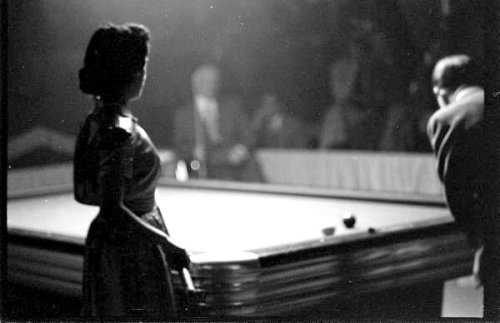
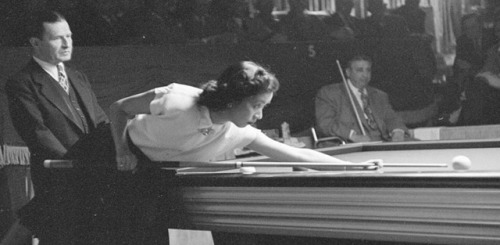
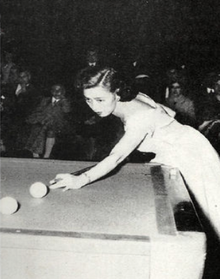

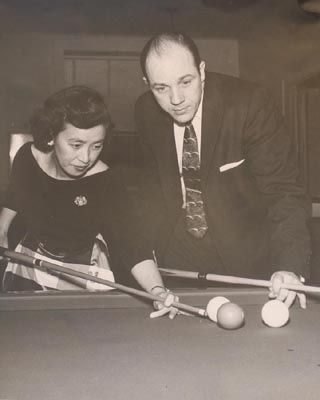

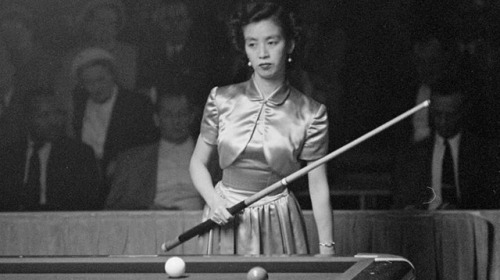
“Men want to beat me. I play men, six, seven hours a day. Men… they do not beat me.”
- Masako “Katsy” Katsura, first woman to compete for a world’s title in billiards
The “First Lady of Billiards” learned from her brother-in-law and in the 50s became Japan’s only female billiards pro. She paved the way for women to come, then left the spotlight and lived a quiet life. She died in 1995.
I read once that shortly before The Merchant Of Venice was written, Queen Elizabeths doctor (who was Jewish) tried to poison her; is that true?
Sort of.
There was a doctor accused of trying to poison Queen Elizabeth. His name was Roderigo Lopez. He was Jewish and of Spanish descent and was fairly well off. He was accused of trying to poison her and conspiring against her with Spanish officials. I believe he is the only English physician to have been executed.
HOWEVER, we don’t know if he actually wanted to poison her. There was no attempt I believe, just accusations. He stated before he died that he “loved the Queen as much as he loved Jesus Christ” which can (and was) be interpreted in many ways. Some people think the Queen thought he was innocent because she took a long time to sign his death warrant. The character may have been the inspiration for Shylock in the Merchant of Venice, since they are both considered villains and evil because they’re Jewish but no one is 100% sure. Based on what I’ve heard, I don’t think he actually wanted to poison the queen and was probably just a target of antisemitism and maybe anti Spanish sentiment but who knows.
Thanks for bringing this up! I’m sure people would love to read about it. I’ve put the Wikipedia article below:
https://en.wikipedia.org/wiki/Roderigo_Lopez#Royal_physician
-Admin @thesunofyork


Why did Vikings have ‘Allah’ embroidered into funeral clothes?
A new investigation into the garments - found in 9th and 10th Century graves - has thrown up new insights into contact between the Viking and Muslim worlds.
The breakthrough was made by textile archaeologist Annika Larsson of Uppsala University. To unlock the puzzle, she enlarged the letters and examined them from all angles, including from behind. Read on

The beautiful stone church at Gallarus, Dingle, Co. Kerry, Ireland. It’s circa 1000 years old
-
 resmeae liked this · 5 months ago
resmeae liked this · 5 months ago -
 calmdownimanurse liked this · 1 year ago
calmdownimanurse liked this · 1 year ago -
 tronoya liked this · 1 year ago
tronoya liked this · 1 year ago -
 mondflash reblogged this · 2 years ago
mondflash reblogged this · 2 years ago -
 ilikecommas reblogged this · 2 years ago
ilikecommas reblogged this · 2 years ago -
 eclectichellmouth reblogged this · 2 years ago
eclectichellmouth reblogged this · 2 years ago -
 apathyislikeawoundedsoul liked this · 3 years ago
apathyislikeawoundedsoul liked this · 3 years ago -
 twilektrekkie reblogged this · 3 years ago
twilektrekkie reblogged this · 3 years ago -
 who-needs-words reblogged this · 3 years ago
who-needs-words reblogged this · 3 years ago -
 who-needs-words liked this · 3 years ago
who-needs-words liked this · 3 years ago -
 l3nal3nouille2 liked this · 3 years ago
l3nal3nouille2 liked this · 3 years ago -
 wizardsgirl25 reblogged this · 3 years ago
wizardsgirl25 reblogged this · 3 years ago -
 wizardsgirl25 liked this · 3 years ago
wizardsgirl25 liked this · 3 years ago -
 learningvariousshit reblogged this · 3 years ago
learningvariousshit reblogged this · 3 years ago -
 xxxmelyannaxxx liked this · 4 years ago
xxxmelyannaxxx liked this · 4 years ago -
 octaviangrey reblogged this · 4 years ago
octaviangrey reblogged this · 4 years ago -
 octaviangrey liked this · 4 years ago
octaviangrey liked this · 4 years ago -
 i-blame-my-mother reblogged this · 4 years ago
i-blame-my-mother reblogged this · 4 years ago -
 i-blame-my-mother liked this · 4 years ago
i-blame-my-mother liked this · 4 years ago -
 cottage-the-hobbit liked this · 4 years ago
cottage-the-hobbit liked this · 4 years ago -
 caeliagrimmheld liked this · 5 years ago
caeliagrimmheld liked this · 5 years ago -
 bi-toya liked this · 5 years ago
bi-toya liked this · 5 years ago -
 strawb3rry-tea liked this · 5 years ago
strawb3rry-tea liked this · 5 years ago -
 questmaster42 liked this · 5 years ago
questmaster42 liked this · 5 years ago -
 wepon reblogged this · 5 years ago
wepon reblogged this · 5 years ago -
 wepon liked this · 5 years ago
wepon liked this · 5 years ago -
 nighthallowed liked this · 5 years ago
nighthallowed liked this · 5 years ago -
 striehart reblogged this · 5 years ago
striehart reblogged this · 5 years ago -
 unendingreblogging reblogged this · 5 years ago
unendingreblogging reblogged this · 5 years ago -
 doktorgun reblogged this · 5 years ago
doktorgun reblogged this · 5 years ago -
 doktorgun liked this · 5 years ago
doktorgun liked this · 5 years ago -
 arbane235 reblogged this · 5 years ago
arbane235 reblogged this · 5 years ago -
 chotimoti reblogged this · 5 years ago
chotimoti reblogged this · 5 years ago -
 laughingmagpye reblogged this · 5 years ago
laughingmagpye reblogged this · 5 years ago -
 laughingmagpye liked this · 5 years ago
laughingmagpye liked this · 5 years ago -
 sloppydemon liked this · 5 years ago
sloppydemon liked this · 5 years ago -
 putamanon-the-jukebox reblogged this · 5 years ago
putamanon-the-jukebox reblogged this · 5 years ago -
 tenderlysweatymilkshakey liked this · 5 years ago
tenderlysweatymilkshakey liked this · 5 years ago -
 unistonen liked this · 5 years ago
unistonen liked this · 5 years ago -
 jukeboxhiro reblogged this · 5 years ago
jukeboxhiro reblogged this · 5 years ago -
 jukeboxhiro liked this · 5 years ago
jukeboxhiro liked this · 5 years ago -
 primarina-inc liked this · 5 years ago
primarina-inc liked this · 5 years ago -
 alpha-rex-soup reblogged this · 5 years ago
alpha-rex-soup reblogged this · 5 years ago -
 anelegantoffense liked this · 5 years ago
anelegantoffense liked this · 5 years ago -
 rosencoppice liked this · 5 years ago
rosencoppice liked this · 5 years ago -
 lady-coyote liked this · 5 years ago
lady-coyote liked this · 5 years ago -
 themalachimeye liked this · 5 years ago
themalachimeye liked this · 5 years ago
A reblog of nerdy and quirky stuff that pique my interest.
291 posts
